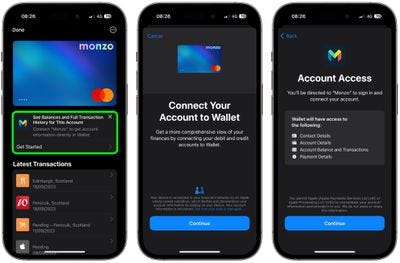The RBI serve up a pretty big Slice 🍰
The Trial of Sam Bankman Fried kicked off this week, and we take a tour of Sweden, Europe and Kenya.
Welcome back, to Fintech Weekly.
This week’s topics take us on a whistle-stop tour of global payments, but not before we check in on the much anticipated FTX trial:
⭐ Who is expected to be the star witness of the SBF-FTX Trial?
🇸🇪 Where is the global hub for A2A payments?
🇪🇺 When will the ECB make a decision on the Digital Euro, and will it be retail or wholesale? 👀
🇰🇪 Why has Worldcoin been shut down in Kenya?
🇮🇳 What rare approval did the RBI grant to Slice? 🍕
How do I see my bank balance in my Apple Wallet?
⭐ Who is expected to be the star witness of the SBF-FTX Trial?

On Tuesday, disgraced founder of the former crypto exchange Sam Bankman Fried (SBF) went on trial where he faces criminal charges of fraud that could rack up 110 years in prison. Should you want to get up to speed on how the son of two respected Stanford Professors found himself as the personification of why people are sceptical of the crypto industry, Reuters have a timeline of events so far. SBF’s ex-girlfriend and head of FTX’s sister company Alameda Research, Caroline Elison is expected to be a star witness in the case. As we discussed in recent weeks, author Micheal Lewis also launched his fly-on-the-wall account of the collapse of FTX with impeccable timing this week. In an interview with 60 Minutes this week, Lewis claims that before his billions went up in smoke, SBF was seriously considering using his wealth to pay Donald Trump not to run for POTUS, all in the name of what SBF refers to as effective altruism.
Sources:
Read more on the story in Reuters, Axios, Wall Street Journal
If you are enjoying the content so far, please take a moment to share the newsletter, it really helps me grow the platform and find new readers.
🇸🇪 Where is the global hub for A2A payments?
Stockholm has emerged as a global leader in account-to-account (A2A) payments. Not only is Stockholm home to Trustly, who have to date raised €23 Million to fund their A2A business, but this week their city rivals Brite raised $60 Million to help grow their instant payments solution. Brite was founded by a former Klarna exec Lena Hackelöer in 2019 and is now available in 25 countries across Europe. In a company statement, they said “Brite will use the fresh funding to accelerate its geographic expansion, strengthen its presence in existing markets, and invest further in product development”. “Notably, the capital will drive further development of the Brite Instant Payments Network (Brite IPN); a proprietary network that is the backbone of the company’s offering.”
A2A payments are on the rise with the global A2A transaction value surpassing $525 billion in 2022, due to real-time payment rails now being available. Popular solutions include Pix in Briazil, UPI in India, and Interac in Canada. Merchants favour the solution as bank payments can reduce their payment processing costs by as much as 70% or 80%, according to some reports. From a consumer perspective, higher interest rates have them searching for alternatives to credit card payments. Josh Bell, general partner of Dawn Capital who led the latest round in Brite believes that the company is on the cusp of leading the next evolution of Open Banking 2.0 that will power real-time A2A payments.
Sources:
Read more on the story on Finextra, Pymnts, TechCrunch
🇪🇺 When will the ECB make a decision on the Digital Euro, and will it be retail or wholesale? 👀
Last week we discussed how Republican Majority Whip Tom Emmer had his CBDC Anti-Surveillance State Act passed by the House Financial Services Committee (HFSC) in an attempt to block the Federal Reserve from issuing a Central Bank Digital Currency (CBDC) to individuals. Adding to the legal concerns around the issuance of CBDCs, the general manager of the Bank of International Settlements, Agustin Carstens weighed in on the topic when he warned that close to 80% of central banks are either not allowed to issue a digital currency under their existing laws, or the legal framework is unclear.
With the European Central Bank expected to make a decision on proposals for a Digital Euro in the next month, it will be interesting to see how this warning impacts their decision. Meanwhile, Coindesk reported this week that while debate rages on regarding the development of a Retail CBDC (i.e. one that would be used to issue a Digital Euro directly to citizens), there has been significant progress made in discussions regarding the development of a Wholesale CBDC, which would be used exclusively by financial institutions, central banks, and other trusted entities involved in large-value, high-frequency transactions. For an overview of the distinction between wholesale and retail CBDCs, check out the Forbes article linked below.
Sources:
Read more on Reuters, Forbes, Coindesk
🇰🇪 Why has Worldcoin been shut down in Kenya?
Sam Altman’s crypto project Worldcoin, which we have covered several times before in this newsletter (here and here), has been ordered to shut down its physical operations in Kenya. A Kenyan parliamentary panel called on the country's information technology regulator to suspend the company’s "physical presence in Kenya until there is a legal framework for regulation of virtual assets and virtual services providers". This development, along with the warnings from BIS in relation to the CBDC regulation discussed above provides further evidence of how regulation is struggling to keep pace with the development of new technologies in the Fintech industry. Altman, the founder of OpenAI made headlines by launching his eyeball-scanning cryptocurrency which has lofty ambitions of solving the problems of identification in payments as well as providing a universal basic income. However, unsurprisingly the concept of scanning every user iris to develop a unique identifier has drawn attention from data protection agencies across the globe.
Sources:
Read more on Reuters and TechCrunch
🇮🇳 What rare approval did the RBI grant to Slice? 🍕
Indian unicorn fintech Slice is merging with North East Small Finance Bank in a first-of-its-kind deal that highlights the evolving banking ecosystem in the world’s most populous country. Slice is a fintech platform that focuses on the millennial and Gen Z population, aiming to build a smart, innovative, and transparent platform to redesign the financial experience for this demographic. Slice has offered users credit card–like cards and at peak issued over 400,000 cards in a month, more than any other fintech or bank. Last year they acquired a 10% stake in North East Small Finance Bank. Banks and Fintechs have been forging strategic relationships in India but obtaining a banking license for a Fintech has been extremely rare due to intense regulatory oversight in South East Asia to limit the control and influence of tech giants. By approving the merger, The Reserve Bank of India enables Slice and North East Small Finance Bank to pursue what they say is their shared vision to reach more consumers who currently lack access to basic banking services, fueling the “digital first banking revolution at a grassroots level for India’s 600 million smartphone population” according to Vikram Chachra, general partner at 8i Ventures, an early backer of Slice.
Sources:
Read more on this story from TechCrunch
How do I see my bank balance in my Apple Wallet?

Apple’s recent iOS upgrade has received significant coverage which has focused on the extensive upgrades to applications like the Notes app and the new Name Drop feature to share contacts with others. UK users also received an upgrade to their Apple Wallet thanks to the country’s advanced Open Banking landscape. Apple Wallet users will now be able to see their current account balance and a history of recent payments and deposits. While this may initially appear to be a fairly insignificant upgrade, it represents a potentially consequential step in Apple’s Open Banking strategy. The tech giant acquired Open Banking firm Credit Kudos last year. While it may save users a couple of seconds to view their account balance in their Apple Wallet versus opening their banking app, it helps users be more financially aware as they make purchases. For banks, it removes the need for their customers to use their native mobile banking applications to view this information. While US users may not like the unfamiliar feeling of not getting access to the first release of a product, they may have to get used to it as the regulation stateside is much less developed than that in the UK.
Sources:
Read more on the story on Forbes and 9to5mac
Thanks for reading, as always, if you have any feedback or suggestions for topics I could cover in future newsletters please let me know by commenting through the link below.
